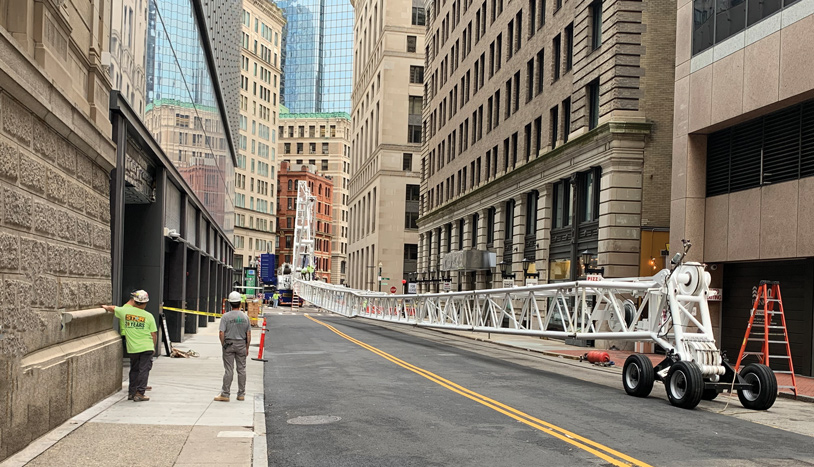Cranes, of course, are used for all kinds of purposes in construction, from erecting the core and shell components of a building to lifting mechanical units or supplies to a building’s roof. But when and how to safely plan the actual lift is a process unto itself—one that requires extremely detailed planning and a critical focus on safety.
In Boston, Structure Tone is currently working on a 225,000sf fit-out in historic Post Office Square—one of the largest in the Boston office’s history. That means there are always eyes on it, so a crane pick in the busy downtown absolutely had to go off without a hitch. Here is how they planned for the perfect pick.
Clear communication. Structure Tone superintendent James Haney began meeting with the safety team, the subcontractors, and the client well in advance. By keeping everyone up to date with developments and information right up until the day of the pick, the team was able to confirm that all factors in play were safe and secure.

“With any big crane pick, it is very important to be talking to the different players ahead of time so when the day of the pick comes, everyone is on the same page.”
Pre-task coordinating. Safety manager Ryan Davis created a traffic and pedestrian management plan for the surrounding area so that everyone could visualize the scene and components. “Due to the nature of this part of downtown Boston, we felt it would be a good idea to have something on paper laying out where people should be, different sign locations, and barricade placements to protect both the public and the workers.”
Detailed operation planning. That plan was coupled with a detailed plan for day of operations that the entire team reviewed multiple times before go-time. “This kind of review is a great tool for any work task, but especially useful in medium-to-high-risk activities such as crane picks,” says Davis.
Daily hazard analysis. As the pick approached, the team also reviewed the plan closely on a daily basis to identify any potential hazards a new day posed and the team’s planned mitigation controls. “Again, having these conversations is critical to making sure everyone involved has covered all of the bases,” Davis says. Ultimately, the crane pick was a smooth operation, with everyone in the right place and all the moving parts going exactly according to plan. “That planning, communication, and attention to detail made all the difference,” says Haney.

